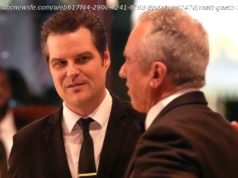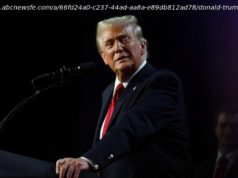The Yankees’ business model depends on must-see superstars. We have seen big acquisitions like Giancarlo Stanton’s before in the Bronx, but titles do not always follow.
There are more teams in Major League Baseball than players who have hit 50 home runs in a season. Thirty teams, 29 sluggers. Only one team has had two players hit 50 in the same year: the 1961 Yankees, one of the most overpowering teams in the history of the sport.
Those Yankees had Roger Maris and Mickey Mantle. Next year’s Yankees will have Giancarlo Stanton and Aaron Judge, as soon as Stanton’s trade from the Miami Marlins becomes official. Even in a season like last year, when hitters launched more homers than ever before, Stanton and Judge challenged the imagination. Nobody hit balls harder, and few hit them farther.
The union of two transcendent stars is almost too much to comprehend, like Batman choosing Superman as his new sidekick. Except we have seen it before in the Bronx, and strings of titles have not followed.
The Yankees are always fascinating because they inspire such extreme emotions. They have the most fans and the most detractors. When you root for the Yankees, you truly expect success. When you root against the Yankees, you believe they embody everything wrong about sports. The sight of Stanton in pinstripes will delight and nauseate many.
In that way, this is just like February 2004, when the Yankees acquired Alex Rodriguez in a trade with the Texas Rangers. Yankees fans rejoiced and Yankees haters groused, but both sides were wrong. After winning six pennants in eight years before A-Rod, the Yankees won just one in his 12 seasons.
Like Stanton and Rodriguez, Dave Winfield was not yet 30 years old when he joined the Yankees in December 1980, also with a 10-year contract, as a free agent from San Diego. In Winfield’s first season — his only one with Reggie Jackson — the Yankees reached their fourth World Series in six years. They never made it back in the Winfield era.
It is wrong to blame those outcomes on Rodriguez or Winfield, who were generally outstanding. Rodriguez did win one championship, and Winfield wound up in the Hall of Fame. But long-term commitments to imported stars tend to get complicated quickly, especially when an opt-out clause looms.
The Yankees caved to Rodriguez after he used his in 2007, infamously giving him a new 10-year deal with visions of a marketing bonanza around his chase to be (ahem) the clean home run champion. Stanton can opt out after 2020, in a deal that was ludicrous from the start.
Jeffrey Loria, the former Marlins owner, gave Stanton a 13-year, $325 million windfall in November 2014. Loria never had to pay the exorbitant salaries that begin in 2018 because he sold the franchise over the summer for $1.2 billion.
The new principal owner is Bruce Sherman, but Derek Jeter runs the team as the chief executive. This was Jeter’s dream as a Yankees star, one of the few personal details he was ever willing to reveal. He is not really the Marlins’ owner, but he is close enough, because he has what ownership represents: power.
The Marlins are hardly the Yankees, but they were available, so Jeter pursued them — and won, as he so often does. He inherited a franchise in financial distress and promptly fired numerous front-office officials who could have smoothed his transition.
He also cut loose a group of team ambassadors, all with long and dignified careers in the game, who could have vouched for him to a skeptical community: Jeff Conine, Andre Dawson, Jack McKeon and Tony Perez. So much for “RE2PECT,” it seems.
Franchise takeovers are rarely tidy, of course, and the Marlins need change. For all of Stanton’s slugging — including 59 homers last season, when he was the National League most valuable player — the team never had a winning record in his eight seasons. The fans did not respond to his home run heroics; Miami has ranked last in the National League in attendance in 11 of the past 12 years.
Still, though Jeter would never acknowledge it, this trade must be humbling. Stanton had the power, not him. The Marlins arranged trades for Stanton with the San Francisco Giants and the St. Louis Cardinals, but Stanton invoked his no-trade clause in each instance. Without the Los Angeles Dodgers in play, Stanton essentially cornered Jeter, forcing him into the role of Tom Hicks, the Texas owner who had given Rodriguez a reckless deal he could no longer afford.
Hicks used the Yankees as an escape hatch then, just as Jeter is doing now, as the person mopping up Loria’s mess. This isn’t exactly the virtuous George Bailey in “It’s a Wonderful Life,” crawling to Old Man Potter for a loan. Teams complain about the Yankees, until they have nowhere else to turn to fix their financial mistakes. Nobody forced Loria to make that deal, and when Stanton fell to the Yankees, how could they resist?
They could have waited until next winter to chase a free agent like Bryce Harper, who could command $400 million and might not even sign with them. Or they could have passed on Stanton, whose decline phase will cost them dearly, as Rodriguez’s did.
But this is who the Yankees are, always and forever — big-game hunters, as General Manager Brian Cashman used to say. They will inevitably spend themselves into some bad deals, as they did with Jacoby Ellsbury. But they have always been keenly aware that their business model depends on must-see superstars.
In Judge, Stanton and Gary Sanchez, they now have three, plus a stable of dominant arms. History offers no guarantees, except that the Yankees will never go too long without asking their fans something like this:
“ What do you want? You want the moon? Just say the word, and I’ll throw a lasso around it and pull it down.”
George Bailey said that, of course. The Yankees dream the way he did, but with Potter’s money. They tossed up their lasso and pulled down a star.






